The above image is a summary of the Perseids meteor activity during the night of August 12th to 13th, coinciding with the maximum activity of this event.
This image was registered from one of the SMART Project’s detectors (University of Huelva), operated at Calar Alto Observatory.
This year, in its translation orbit around the sun, the Earth has crossed again comet 109/Swift-Tuttle orbit. During this period, our planet will meet with the rests of gas, dust and little particles (like grains of sand) that the comet has left behind in its orbit which takes 133 years, (the last approximation to the Sun happened in 1992), and that the Earth will transit. Mainly due of the Earth own speed of approximately 30 km/s (108.000 km/h), but also adding the relative speed of the rests of the comet, these particles can reach a speed of about 210.000 km/h, rubbing against our atmosphere and having enough temperature for burning. Sometimes they have a similar bright as the stars, and together with their apparent move, they can show a trace in the sky of a few seconds. That’s why we call them “shooting stars”.
 Usually, this phenomenon (meteor) is produced at the high layers of the atmosphere, and if the burned particle is very little, it won’t be even seen. But if it has enough size (some centimeters of bigger), which is less frequent, it will produce a bright light (fireball) and even, if it is big enough, it could be not burned totally and a little fragment could reach the ground (meteorite). The number of “shooting stars” and their bright will depend on the density and distribution of the rests behind the comet. This adds a difficult for predicting them precisely, but it is normal seeing some of this “shooting stars” around August 11th-14th. This year, the maximum was predicted at 18 hours of August 12th, so the better night for seeing the "meteor shower" was the one from August 12th to 13th. However, the bright of the moon in its last quarter, has made it difficult to see the weakest stars.
Usually, this phenomenon (meteor) is produced at the high layers of the atmosphere, and if the burned particle is very little, it won’t be even seen. But if it has enough size (some centimeters of bigger), which is less frequent, it will produce a bright light (fireball) and even, if it is big enough, it could be not burned totally and a little fragment could reach the ground (meteorite). The number of “shooting stars” and their bright will depend on the density and distribution of the rests behind the comet. This adds a difficult for predicting them precisely, but it is normal seeing some of this “shooting stars” around August 11th-14th. This year, the maximum was predicted at 18 hours of August 12th, so the better night for seeing the "meteor shower" was the one from August 12th to 13th. However, the bright of the moon in its last quarter, has made it difficult to see the weakest stars.
When we see some of those stars, apparently all of them come from the same zone, called radiant. In the case of the ones during these days, this point in the sky from which they seem to come is located at Perseo Constellation. Hence we call them Perseids. We also call them "meteor shower", although this is an optimistic term, as it is difficult to see the amount of them we are normally told about. For this to happen, we should register the whole sky with the best conditions of darkness and attention.
This easy observation of a "meteor shower" like Perseids, accessible to everyone without any further equipment, is a good time for all of us to realize how easy it is to make a responsible use of the illumination. This will allow conserving and enjoining the sky observation, not only for us but for future generations.
Below are a couple of videos showing two of the brightest fireballs associated to this meteor shower registered during August 12th-13th night.
Calar Alto (CAHA) fireball detection station, together with the one at the Observatory of Sierra Nevada (IAA-CSIC) and others placed at different locations in Spain, are part of the S.M.A.R.T. project led by Professor José María Madiedo (University of Huelva) to track that kind of objects. Specifically, Calar Alto (CAHA) station and the one at Sierra Nevada (IAA-CSIC) constitute a collaboration agreement between Professor Madiedo and both institutions.
 English (UK)
English (UK)
